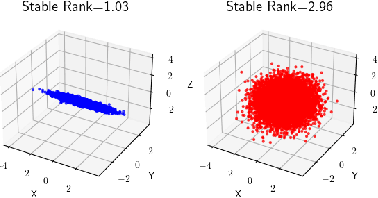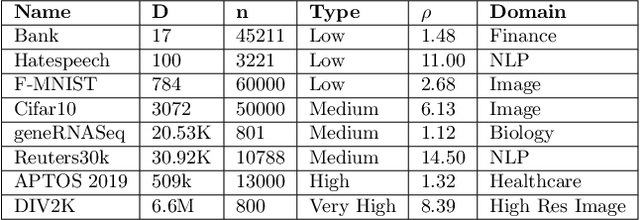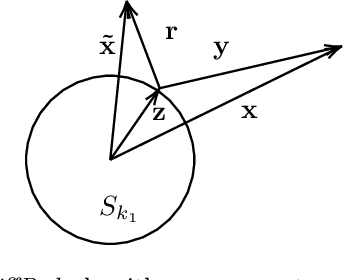Gagan Raj Gupta
Department of CSE, IIT Bhilai, India
Autograder+: A Multi-Faceted AI Framework for Rich Pedagogical Feedback in Programming Education
Oct 30, 2025Abstract:The rapid growth of programming education has outpaced traditional assessment tools, leaving faculty with limited means to provide meaningful, scalable feedback. Conventional autograders, while efficient, act as black-box systems that simply return pass/fail results, offering little insight into student thinking or learning needs. Autograder+ is designed to shift autograding from a purely summative process to a formative learning experience. It introduces two key capabilities: automated feedback generation using a fine-tuned Large Language Model, and visualization of student code submissions to uncover learning patterns. The model is fine-tuned on curated student code and expert feedback to ensure pedagogically aligned, context-aware guidance. In evaluation across 600 student submissions from multiple programming tasks, the system produced feedback with strong semantic alignment to instructor comments. For visualization, contrastively learned code embeddings trained on 1,000 annotated submissions enable grouping solutions into meaningful clusters based on functionality and approach. The system also supports prompt-pooling, allowing instructors to guide feedback style through selected prompt templates. By integrating AI-driven feedback, semantic clustering, and interactive visualization, Autograder+ reduces instructor workload while supporting targeted instruction and promoting stronger learning outcomes.
Process Integrated Computer Vision for Real-Time Failure Prediction in Steel Rolling Mill
Oct 30, 2025Abstract:We present a long-term deployment study of a machine vision-based anomaly detection system for failure prediction in a steel rolling mill. The system integrates industrial cameras to monitor equipment operation, alignment, and hot bar motion in real time along the process line. Live video streams are processed on a centralized video server using deep learning models, enabling early prediction of equipment failures and process interruptions, thereby reducing unplanned breakdown costs. Server-based inference minimizes the computational load on industrial process control systems (PLCs), supporting scalable deployment across production lines with minimal additional resources. By jointly analyzing sensor data from data acquisition systems and visual inputs, the system identifies the location and probable root causes of failures, providing actionable insights for proactive maintenance. This integrated approach enhances operational reliability, productivity, and profitability in industrial manufacturing environments.
Action Recognition based Industrial Safety Violation Detection
Dec 07, 2024Abstract:Proper use of personal protective equipment (PPE) can save the lives of industry workers and it is a widely used application of computer vision in the large manufacturing industries. However, most of the applications deployed generate a lot of false alarms (violations) because they tend to generalize the requirements of PPE across the industry and tasks. The key to resolving this issue is to understand the action being performed by the worker and customize the inference for the specific PPE requirements of that action. In this paper, we propose a system that employs activity recognition models to first understand the action being performed and then use object detection techniques to check for violations. This leads to a 23% improvement in the F1-score compared to the PPE-based approach on our test dataset of 109 videos.
PatchAlign:Fair and Accurate Skin Disease Image Classification by Alignment with Clinical Labels
Sep 08, 2024



Abstract:Deep learning models have achieved great success in automating skin lesion diagnosis. However, the ethnic disparity in these models' predictions needs to be addressed before deploying them. We introduce a novel approach, PatchAlign, to enhance skin condition image classification accuracy and fairness by aligning with clinical text representations of skin conditions. PatchAlign uses Graph Optimal Transport (GOT) Loss as a regularizer to perform cross-domain alignment. The representations obtained are robust and generalize well across skin tones, even with limited training samples. To reduce the effect of noise and artifacts in clinical dermatology images, we propose a learnable Masked Graph Optimal Transport for cross-domain alignment that further improves fairness metrics. We compare our model to the state-of-the-art FairDisCo on two skin lesion datasets with different skin types: Fitzpatrick17k and Diverse Dermatology Images (DDI). PatchAlign enhances the accuracy of skin condition image classification by 2.8% (in-domain) and 6.2% (out-domain) on Fitzpatrick17k, and 4.2% (in-domain) on DDI compared to FairDisCo. Additionally, it consistently improves the fairness of true positive rates across skin tones. The source code for the implementation is available at the following GitHub repository: https://github.com/aayushmanace/PatchAlign24, enabling easy reproduction and further experimentation.
DiffRed: Dimensionality Reduction guided by stable rank
Mar 09, 2024



Abstract:In this work, we propose a novel dimensionality reduction technique, DiffRed, which first projects the data matrix, A, along first $k_1$ principal components and the residual matrix $A^{*}$ (left after subtracting its $k_1$-rank approximation) along $k_2$ Gaussian random vectors. We evaluate M1, the distortion of mean-squared pair-wise distance, and Stress, the normalized value of RMS of distortion of the pairwise distances. We rigorously prove that DiffRed achieves a general upper bound of $O\left(\sqrt{\frac{1-p}{k_2}}\right)$ on Stress and $O\left(\frac{(1-p)}{\sqrt{k_2*\rho(A^{*})}}\right)$ on M1 where $p$ is the fraction of variance explained by the first $k_1$ principal components and $\rho(A^{*})$ is the stable rank of $A^{*}$. These bounds are tighter than the currently known results for Random maps. Our extensive experiments on a variety of real-world datasets demonstrate that DiffRed achieves near zero M1 and much lower values of Stress as compared to the well-known dimensionality reduction techniques. In particular, DiffRed can map a 6 million dimensional dataset to 10 dimensions with 54% lower Stress than PCA.
Entropy Aware Training for Fast and Accurate Distributed GNN
Nov 04, 2023



Abstract:Several distributed frameworks have been developed to scale Graph Neural Networks (GNNs) on billion-size graphs. On several benchmarks, we observe that the graph partitions generated by these frameworks have heterogeneous data distributions and class imbalance, affecting convergence, and resulting in lower performance than centralized implementations. We holistically address these challenges and develop techniques that reduce training time and improve accuracy. We develop an Edge-Weighted partitioning technique to improve the micro average F1 score (accuracy) by minimizing the total entropy. Furthermore, we add an asynchronous personalization phase that adapts each compute-host's model to its local data distribution. We design a class-balanced sampler that considerably speeds up convergence. We implemented our algorithms on the DistDGL framework and observed that our training techniques scale much better than the existing training approach. We achieved a (2-3x) speedup in training time and 4\% improvement on average in micro-F1 scores on 5 large graph benchmarks compared to the standard baselines.
PFSL: Personalized & Fair Split Learning with Data & Label Privacy for thin clients
Mar 19, 2023



Abstract:The traditional framework of federated learning (FL) requires each client to re-train their models in every iteration, making it infeasible for resource-constrained mobile devices to train deep-learning (DL) models. Split learning (SL) provides an alternative by using a centralized server to offload the computation of activations and gradients for a subset of the model but suffers from problems of slow convergence and lower accuracy. In this paper, we implement PFSL, a new framework of distributed split learning where a large number of thin clients perform transfer learning in parallel, starting with a pre-trained DL model without sharing their data or labels with a central server. We implement a lightweight step of personalization of client models to provide high performance for their respective data distributions. Furthermore, we evaluate performance fairness amongst clients under a work fairness constraint for various scenarios of non-i.i.d. data distributions and unequal sample sizes. Our accuracy far exceeds that of current SL algorithms and is very close to that of centralized learning on several real-life benchmarks. It has a very low computation cost compared to FL variants and promises to deliver the full benefits of DL to extremely thin, resource-constrained clients.
Friendliness Of Stack Overflow Towards Newbies
Aug 21, 2022



Abstract:In today's modern digital world, we have a number of online Question and Answer platforms like Stack Exchange, Quora, and GFG that serve as a medium for people to communicate and help each other. In this paper, we analyzed the effectiveness of Stack Overflow in helping newbies to programming. Every user on this platform goes through a journey. For the first 12 months, we consider them to be a newbie. Post 12 months they come under one of the following categories: Experienced, Lurkers, or Inquisitive. Each question asked has tags assigned to it and we observe that questions with some specific tags have a faster response time indicating an active community in that field over others. The platform had a steady growth up to 2013 after which it started declining, but recently during the pandemic 2020, we can see rejuvenated activity on the platform.
 Add to Chrome
Add to Chrome Add to Firefox
Add to Firefox Add to Edge
Add to Edge